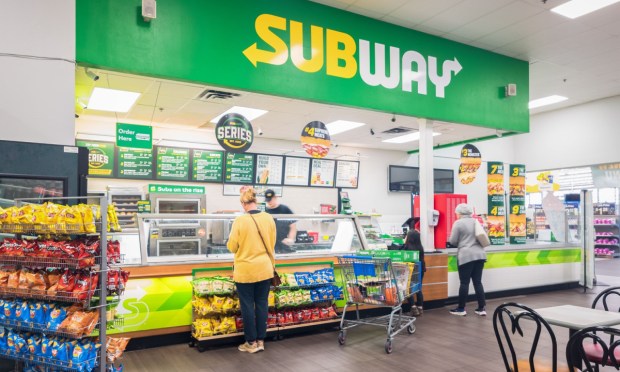Subway Relaunches Loyalty Program as QSRs Drive Digital Orders

This week in restaurant news, Subway rethinks its rewards strategy, Chick-fil-A expands its mobile order drive-thru lanes and Whataburger opens its first digital-only location.
As restaurants’ economic challenges have stretched on for years, many brands are rethinking their loyalty programs in an effort to find ways to keep consumers coming back without unnecessarily racking up costs. Subway, for its part, is turning to a tiered rewards system.
The quick-service restaurant (QSR) giant, which has nearly 37,000 locations around the world, on Thursday (Sept. 7) announced the launch of an updated loyalty program, MVP Rewards, in the U.S. and Canada. The program offers consumers more generous rewards the more they spend per year, with the three levels being less than $200 annual spend, more than $200 and more than $400.
“Subway fans are the best in QSR and to thank them for their loyalty, we’re giving them the star treatment as MVP Rewards members,” Mike Kappitt, the brand’s chief operating and insights officer, said in a statement. “Consumer input helped inform our refreshed loyalty program to create a best-in-class experience.”
Certainly, many consumers seek out rewards programs at QSRs. PYMNTS Intelligence from the March study, “Connected Dining: Consumers Like the Taste of Discount Meals,” which drew from a February survey of more than 1,800 U.S. consumers, found that 51% reported using a restaurant loyalty program, with 49% participating in these programs at QSRs.
Subway’s move to update the program comes as the chain is in the process of being acquired by Dunkin’ owner Roark Capital.
Chick-fil-A Expands Mobile Drive-Thru Lanes to 300+ Locations
Chick-fil-A, too, is looking to boost digital engagement. The chain announced Tuesday (Sep. 5) that intends to have its “Mobile Thru” mobile drive-thru lanes in place at more than 300 restaurants by the end of the year.
“Our hope with Mobile Thru is to help guests experience the drive-thru quicker than ever before,” Julie Ledford, the brand’s Service and Hospitality team’s principal program lead, said in a statement. “By dedicating one of our lanes exclusively for mobile order pickup, we are creating an easier and more efficient experience for our guests on the go.”
The move comes as consumers’ adoption of digital ordering channels continues to grow. PYMNTS Intelligence from our recent study “Consumer Interest in an Everyday App,” created in collaboration with PayPal, which draws on insights from a survey of more than 3,300 consumers in the United States and Australia, reveals that 17.7% of the U.S. population exclusively purchases food from restaurants using internet-connected devices
Plus, an additional 26% places restaurant orders both using connected devices and via traditional channels
Whataburger Opens First Digital-Only Concept
In related news, QSR chain Whataburger, which has nearly 1,000 locations across 14 states, has become the latest restaurant brand to debut a digital-only model, including the brand’s first “Digital Pick-Up Lane” drive-thru, which opened Tuesday in Austin, Texas.
This so-called Whataburger Digital Kitchen offers pickup for orders placed via the brand’s mobile app or website not only through its digital drive-thru lane but also at designated food lockers, and consumers can alternately order on-site at digital self-service kiosks.
“Making Whataburger quicker and more convenient for our Guests means fully embracing the digital restaurant experience—but not forgetting who we are at our core: A Hometown Whataburger,” said Whataburger President and CEO Ed Nelson. “Our Austin Guests were early to embrace other digital innovations, making it a perfect fit for our first Whataburger Digital Kitchen.”
The kiosk model indeed tends to work for QSRs, though consumers are less amenable to the technology with other kinds of restaurants. PYMNTS Intelligence from the report, “The Digital Divide: Technology, the Metaverse and the Future of Dining Out,” which drew from a survey of about 2,500 U.S. consumers, revealed that 51% of grab-and-go customers said ordering through a self-service kiosk would positively impact their satisfaction, while only 20% of dine-in customers said the same.

